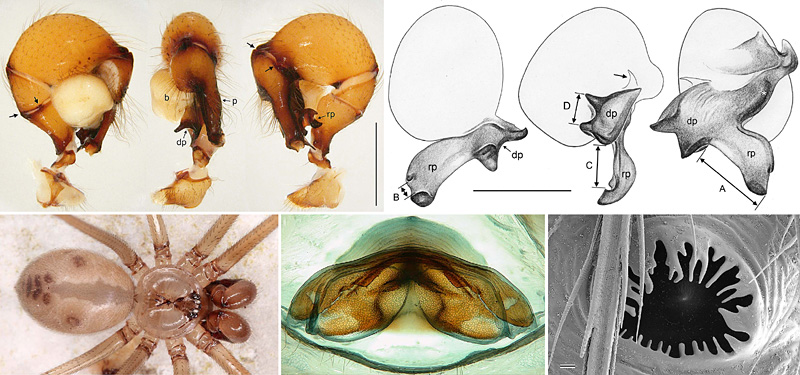- Some species
are difficult to distinguish from each other, which has led to numerous misidentifications in
the literature.
- Precise geographic data are a fundamental aspect of taxonomic work, but many previously published collecting sites are difficult to locate. We thus made a major effort to georeference all published localities.
- This revision is part of a series that aims to result in a full analysis of Smeringopinae relationships. Previous revisions have dealt with the two sub-Saharan genera (Smeringopus and Smeringopina; Huber 2012, 2013), and with Hoplopholcus (Huber 2020). This is the fouth monograph in the series, which will be followed soon by a monograph on Holocnemus and Crossopriza. To inform a future comprehensive analysis of the entire subfamily, we did not limit our attention to characters useful for species delimitation but also focused on characters supposed to be useful for reconstructing the phylogeny of the entire subfamily (in particular SEM characters).

Due to the excellent collections of my coauthors Martina Pavlek and Marjan Komnenov, we could base our revision on many more specimens from many more localities than available to previous authors. In addition, we support species limits with morphometric data, and we point out deviating specimens from particular caves or areas that we tentatively assign to known species but that deserve further study. We suggest that the ‘northern clade’ (ranging from southern Croatia to northern Albania) has a relict distribution, resulting from past and present geologic and climatic factors.